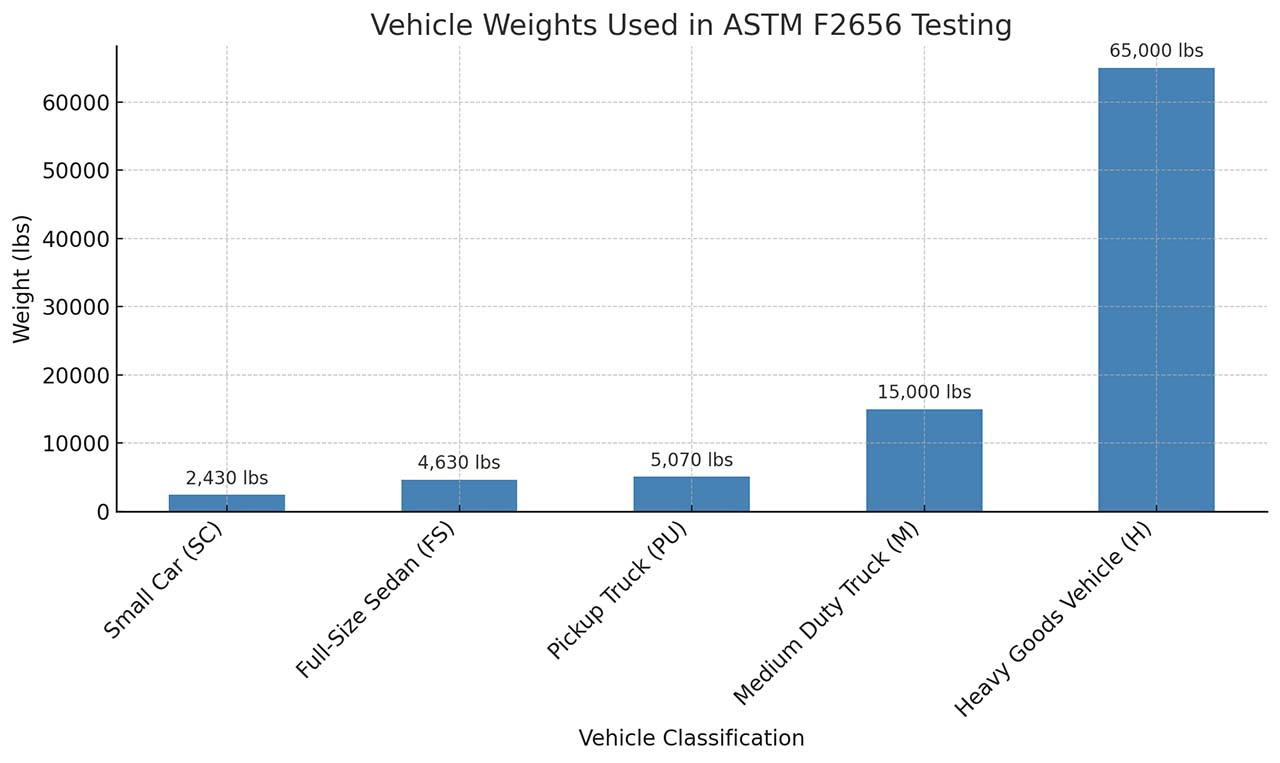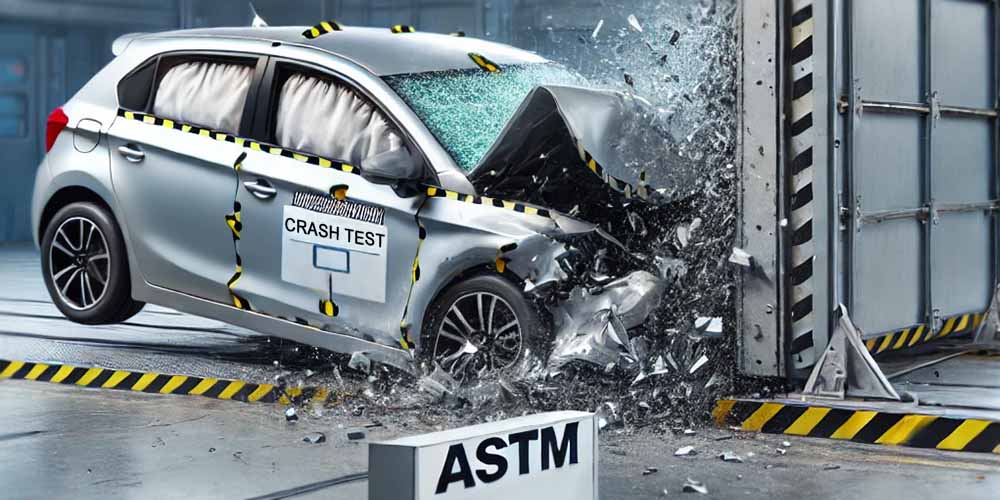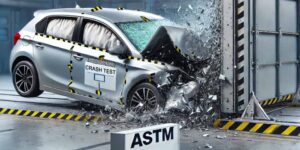An Overview of the ASTM F2656 Crash Test Rating System
ASTM F2656 is the gold standard for evaluating the performance of vehicle security barriers. Designed to test the ability of barriers to stop hostile vehicles, this standard is widely adopted for securing critical infrastructure, public venues, and other high-risk areas. By adhering to ASTM F2656, manufacturers can ensure that their products meet rigorous safety and performance criteria.
Key Components of ASTM F2656
1. Vehicle Classification
The standard categorizes vehicles by type and weight to simulate a wide range of real-world threat scenarios:
- Small Car (SC): Approximately 2,430 lbs (1,100 kg)
- Full-Size Sedan (FS): Approximately 4,630 lbs (2,100 kg)
- Pickup Truck (PU): Approximately 5,070 lbs (2,300 kg)
- Medium Duty Truck (M): Approximately 15,000 lbs (6,800 kg)
- Class 7 Cabover (C7): Approximately 15,873 lbs (7,200 kg)
- Heavy Goods Vehicle (H): Approximately 65,000 lbs (29,500 kg)

2. Impact Speed Designations
Each vehicle type is tested at specific speeds to evaluate barrier performance under different conditions. Common impact speeds include:
- 30 mph (48 kph)
- 40 mph (64 kph)
- 50 mph (80 kph)
- 60 mph (96 kph)
3. Penetration Ratings (P-Ratings)
The penetration rating indicates the distance a vehicle penetrates past the barrier upon impact, measured from the barrier’s attack face to the vehicle’s final resting position:
- P1: Penetration of 1 meter (3.3 feet) or less
- P2: Penetration greater than 1 meter (3.3 feet) up to 7 meters (23 feet)
- P3: Penetration greater than 7 meters (23 feet) up to 30 meters (98.4 feet)
- Failure: Penetration beyond 30 meters (98.4 feet)
4. Rating System
A complete ASTM F2656 rating combines vehicle type, impact speed, and penetration rating. For example, an M50/P1 rating signifies that the barrier can stop a medium-duty truck (15,000 lbs) traveling at 50 mph with a penetration of 1 meter or less.
Additional Considerations for Crash Test Ratings
1. Real-Life Testing Scenarios
ASTM F2656 simulates real-life threats by testing various vehicle types and speeds. This provides accurate performance data for barriers intended to protect assets, infrastructure, and pedestrians.
2. Applications for ASTM F2656-Compliant Barriers
These ratings are crucial for securing:
- Airports
- Government facilities
- Stadiums and arenas
- Urban centers
- Pedestrian zones
- Military installations
3. Understanding Vehicle Energy Impact
The energy a vehicle carries during an impact is proportional to its weight and speed. Barriers rated under ASTM F2656 are specifically engineered to withstand these forces while minimizing penetration.
4. Comparison with International Standards
- PAS68 (UK): Focuses on vehicle impact resistance in British installations.
- IWA14-1 (Global): A comprehensive international standard.
- ASTM F2656 provides broader vehicle classifications and penetration criteria, making it ideal for diverse applications.
5. Product Applications with Ratings
Examples of products and their certifications:
- Block Axess Hostile Vehicle Mitigation System: Rated ASTM F2656 – M30/P3. See the Block Axess.
- Crash-Rated Bollards: Various ratings, such as M30 or M50, depending on the model. See our bollards.
FAQs About ASTM F2656
1. What does an ASTM F2656 rating represent?
The rating represents a barrier’s ability to stop a specific vehicle type traveling at a defined speed with minimal penetration.
2. How are barriers tested?
Barriers are subjected to controlled crash tests using vehicles of various weights and speeds to measure their stopping power and penetration resistance.
3. What is the difference between M30 and M50 ratings?
The “M” denotes a medium-duty truck (15,000 lbs). M30 indicates a 30 mph impact speed, while M50 indicates a 50 mph impact speed.
4. Are ASTM F2656 ratings suitable for all environments?
Yes, ASTM F2656 ratings are versatile and applicable to high-security areas, urban environments, and temporary installations.
5. What other certifications should I look for?
Complementary certifications like PAS68 and IWA14-1 can offer additional assurance, especially for international installations.
Call to Action
For more information about ASTM F2656-certified products or to find the right solution for your security needs, contact us today. Our team is here to help you navigate product options and ensure the highest level of safety for your project.
Direct Link to ASTM F2656 Standard:
Visit https://www.astm.org/ to access the full standard and official documentation.




